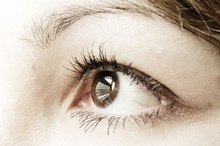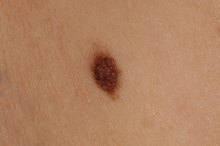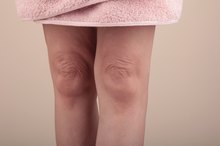Microdermabrasion for Legs
Microdermabrasion is a procedure that mechanically removes the top layer of skin to reveal smoother skin 1. Dermatologists use microdermabrasion to lessen the appearance of superficial blemishes, such as bug bites, stretch marks and uneven skin tones, and reveal smoother, softer skin on your legs 1. Before you seek treatment, learn about the procedure, how it affects your skin and what to expect after the operation.
Preparation
Consult with your doctor or dermatologist about the procedure. If you have a darker skin tone, your doctor might suggest wearing a sunblock with a high SPF a few weeks before the procedure. This will tone down the pigment in your cells to prevent hyper-pigmentation. In some cases, doctors discourage the use of certain prescribed drugs, such as Retin-A or Accutane, for six months before the treatment. These guidelines are to ensure that the skin on your legs is protected during the procedure.
- Consult with your doctor or dermatologist about the procedure.
- If you have a darker skin tone, your doctor might suggest wearing a sunblock with a high SPF a few weeks before the procedure.
Procedure
Care of Skin After Cryosurgery
Learn More
During microdermabrasion, a doctor blasts the surface of the skin on your legs with sterile micro-particles to rub off the top layer of skin 1. These particles are immediately suctioned away, along with the dead skin cells. Your doctor will do this with a wand-like machine that delivers tiny aluminum oxide or salt crystals at a high velocity. Anesthesia is not required for this procedure, which takes about 30 to 45 minutes. Generally, doctors recommend a series of four to eight sessions over two to four weeks to achieve noticeable improvement.
- During microdermabrasion, a doctor blasts the surface of the skin on your legs with sterile micro-particles to rub off the top layer of skin 1.
- Your doctor will do this with a wand-like machine that delivers tiny aluminum oxide or salt crystals at a high velocity.
The Skin's Reaction
By damaging the top layer of your skin on your legs, microdermabrasion forces your skin to react in the same way it would toward a mild injury 1. In other words, your body rushes to replace the lost cells with new healthy cells. As a result of this healing process, mild swelling and redness might appear for the first hour or two. However, after two hours, you'll notice that your legs look and feel smoother.
- By damaging the top layer of your skin on your legs, microdermabrasion forces your skin to react in the same way it would toward a mild injury 1.
- In other words, your body rushes to replace the lost cells with new healthy cells.
Recovery
Can a Chemical Peel Tighten Skin Around the Eyes?
Learn More
After the first treatment, your doctor may coat the affected area with a mild ointment or cooling gel to protect the new layer of skin. To further protect your skin, you must avoid the sun for several months. When going outside, make sure that you apply sunblock and keep your legs covered. In particular, dark skin types need to ensure that their skin is properly protected to prevent hyper-pigmentation and skin discoloration. Mircrodermabrasion requires little to no downtime.
- After the first treatment, your doctor may coat the affected area with a mild ointment or cooling gel to protect the new layer of skin.
- In particular, dark skin types need to ensure that their skin is properly protected to prevent hyper-pigmentation and skin discoloration.
Related Articles
References
- Yale School of Medicine: Microdermabrasion
- Real Self: Microdermabrasion for Scar Removal?
- El-Domyati M, Hosam W, Abdel-Azim E, Abdel-Wahab H, Mohamed E. Microdermabrasion: a clinical, histometric, and histopathologic study. J Cosmet Dermatol. 2016;15(4):503–513. doi:10.1111/jocd.12252
- Fąk M, Rotsztejn H, Erkiert-Polguj A. The early effect of microdermabrasion on hydration and sebum level. Skin Res Technol. 2018;24(4):650–655. doi:10.1111/srt.12580
- National Center for Biotechnology Information, U.S. National Library of Medicine: StatPearls. Microdermabrasion. Updated January 13, 2020.
Writer Bio
What does a fashion aficionado hailing from New York do when she turns of age? Travel the world and write about fashion. From New York to Bangkok, from Onyxmilk (USA) to Adorned Magazine (UK), Lindsay Christinee has traveled and written about it all since 2009.









